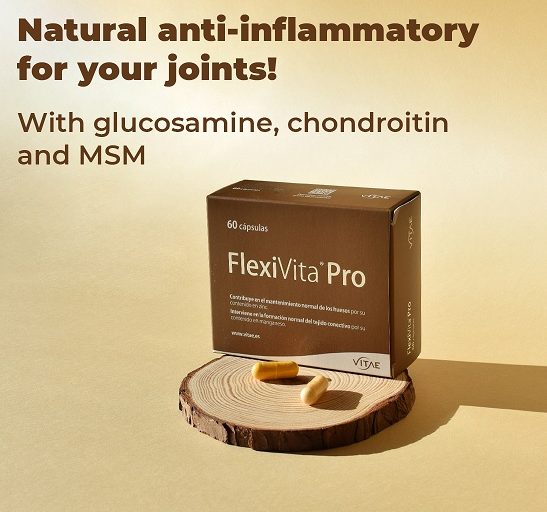A joint is where two or more bones meet. This “junctions” allow bones to move freely but within a controlled range thanks to a layer of tough, slippery tissue called cartilage. Cartilage is there for a number of reasons. Bone rubbing against bone directly would just wear out and deteriorate, causing quite a lot of pain in the process. Cartilage cushions the bony ends, thereby absorbing the impact caused by normal, day to day movements. Cartilage also helps spread the load of the bone and muscle evenly across the joint. We have cartilage in all joints in the body, e.g. wrists, elbows, hips, ankles and knees, as well as in the joints of every single finger and toe. The knees are particularly complex structures, given their vital function in movement, so they have extra rings of cartilage between the bones called menisci.
What happens to our joints as we age
Like the rest of the tissues in our body, joints also deteriorate as a result of the normal “wear and tear” brought about by ageing. Because cartilage is largely made of glycoproteins (protein molecules combined with complex sugars) and water, just the lack of appropriate repair that is associated with normal chronological ageing can result in the degeneration of joint tissue. Equally, lack of appropriate hydration, which is also commonly in ageing individuals, can just make the cartilage “shrink” in size, resulting in pain and discomfort caused by portions of the bone “rubbing” against other bony structures which are not supposed to be in contact. That’s the most “innocent” type of joint tissue ageing, that’s not in any way affected by a condition that we all know about and fear as a main source of pain as we grow older. I’m referring to osteoarthritis.
What is osteoarthritis?
Osteoarthritis, sometimes also referred to as “arthrosis”, is a condition that affects the integrity of joint tissue. The surfaces within your joints become damaged so the joint doesn’t move as smoothly as it should. As the cartilage covering the ends of the bones gradually shrinks, the bone underneath thickens because of the increase pressure and rubbing that it becomes exposed to. Bone tissue in that area becomes hyperactive in an attempt to repair the damage caused by the extra pressure, causing bony spurs to form, extra “cushioning liquid” (called synovial fluid) to be produced and ligaments to thicken in order to make the joint more stable. The disadvantage of this attempt by the body to heal things this way is that all this extra thickening of the tissues causes swelling, and inflammation and pain follow suit. At this point osteoarthritis sufferers may need to take painkillers regularly to alleviate the discomfort, which can be, in some cases, quite severe.
So what can I do to prevent and manage this situation naturally without drugs?
If you’d like to prevent osteoarthritis or to manage without the need for drugs, my advice is:
- If you need to lose some weight, this is the perfect excuse. Relieving your joints from carrying those extra pounds everyday will translate into less wear and tear, and will lessen any further damage, naturally helping alleviate the pain. Work with a qualified nutrition health professional (like a member of BANT, British Association for Applied Nutrition and Nutritional Therapy, the professional association for Registered Nutritional Therapists in the UK) to ensure you’re following a dietary programme that works for you. BANT members follow a set of up-to-date, science-based wellbeing guidelines that help prevent and manage a number of inflammatory conditions, including osteoarthritis.
- Take a good quality supplement providing glucosamine sulphate and chondroitin. These 2 compounds are normally found in joint cartilage and studies suggest that taking them as a food supplement improves the health of damaged cartilage.
- Have a diet rich in vitamin C and natural sulphur. Both are necessary for joint health and suppleness. Sulphur is present in all cruciferous vegetables (like broccoli, cauliflower, kale, sprouts) and vitamin C is also in peppers, salad leaves, citrus fruits and berries. It’s always a good idea to “top up” these 2 nutrients with a supplement too. MSM (Methylsulfonylmethane) is a source of organic sulphur that has been shown to help with the repair of joint tissue. And vitamin C helps with the formation of collagen and elastin fibres in connective tissue, e.g. in tendons and ligaments, as well as in the the fascia, the thin “wrap” that holds muscle, cartilage and bone together.
- Other micronutrients, particularly trace minerals like zinc, silicon and manganese, also help with both cartilage and bone health. Additionally zinc is known as a natural anti-inflammatory agent. Oats and millet are a great source of silica, whilst brown rice and chickpeas are good sources of manganese. Zinc is present in red meat, e.g. beef, lamb, but also in sesame and pumpkin seeds. Having these nutrients in a daily supplement will help support bone and joint health.
Flexivita by Vitae Health Innovation contain all the above nutrient and works great when combined with Vitamin C, a source of vitamin C with green tea polyphenols and bioperine for enhanced bioavailability. Here’s to happy, healthy and young joints!
Disclaimer: Always consult with a nutrition health professional so that you get individualised advice that works for you. Vitae recommends Registered Nutritional Therapists.





